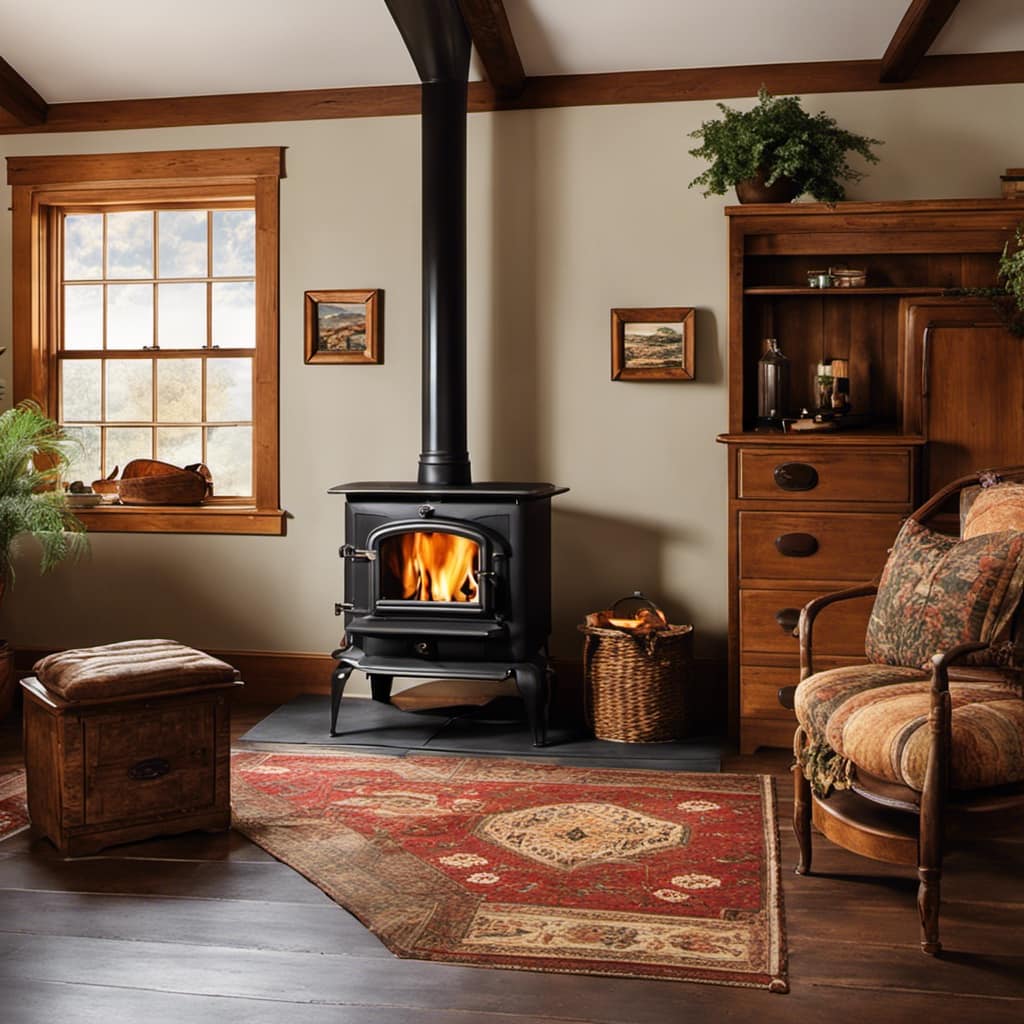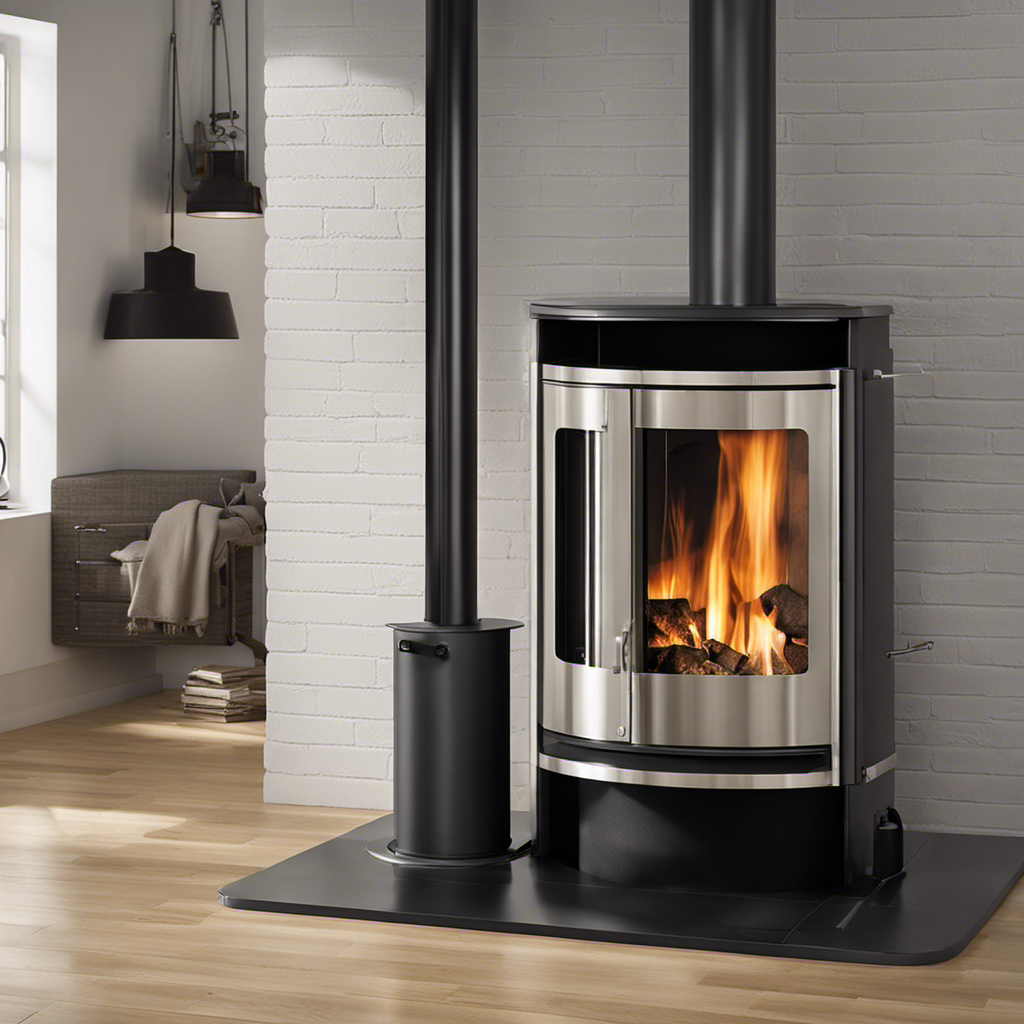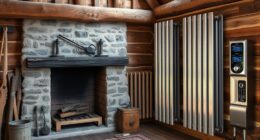Just like a thick fog can obscure the beauty of a picturesque landscape, the accumulation of soot on the glass of a wood stove can rapidly decrease both its performance and visual attractiveness.
But fear not, for I am here to guide you through the process of removing that stubborn soot and restoring your wood stove glass to its former clarity.
With just a few essential tools and some simple steps, you’ll be able to enjoy a clean and clear view of your roaring fire in no time.
Key Takeaways
- Soot discoloration occurs when the combustion process isn’t efficient.
- Burning low-quality or wet firewood contributes to soot accumulation.
- Regularly clean and maintain the stove to prevent future soot build-up.
- Use natural and homemade cleaning solutions, such as vinegar and water mixture, baking soda paste, or lemon juice and salt scrub, for stubborn soot.
Understanding the Causes of Soot Build-up
I’ve noticed that understanding the causes of soot build-up on wood stove glass is crucial for finding an effective solution. Soot discoloration occurs when the combustion process isn’t efficient, leading to the production of incomplete combustion byproducts.
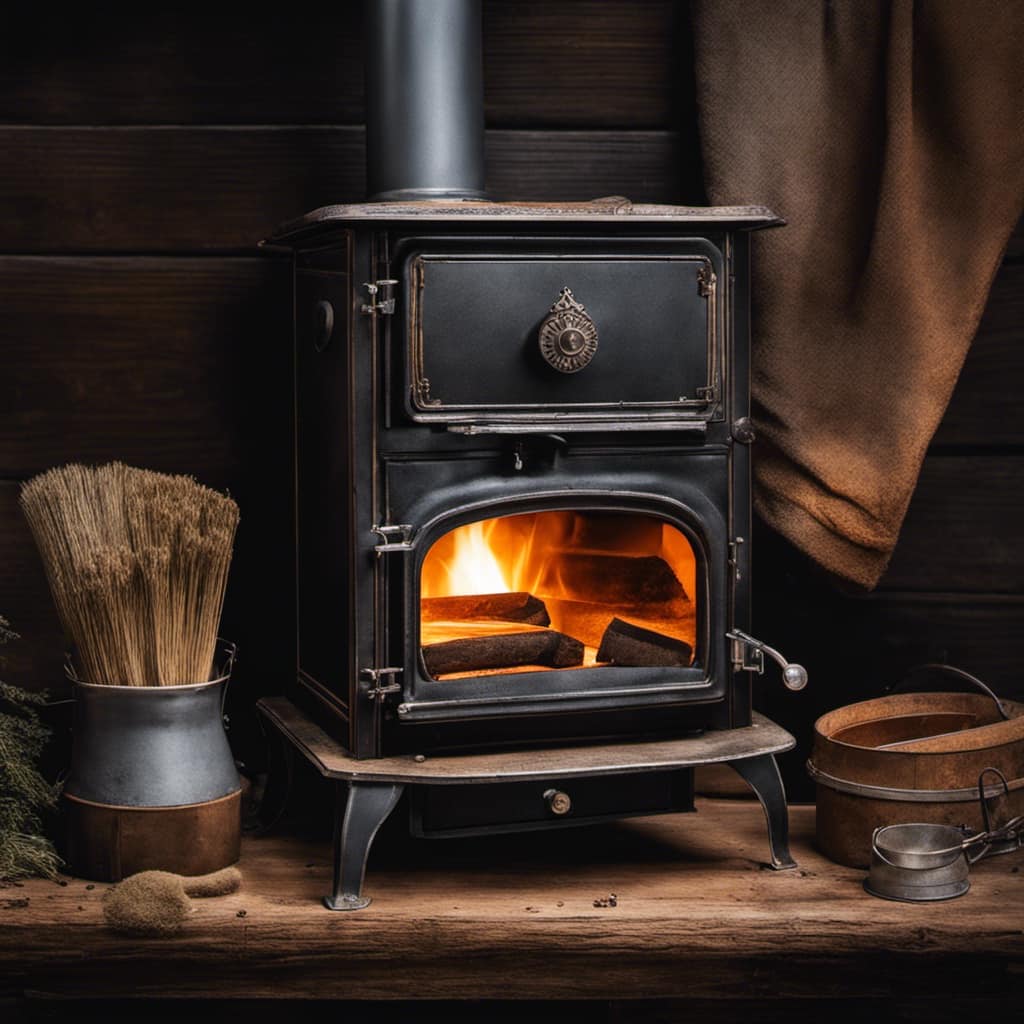
One of the main factors that contribute to soot accumulation is the quality of the air in the environment. Poor air quality, especially when burning low-quality or wet firewood, can result in increased soot production. Additionally, a lack of sufficient oxygen supply or improper venting can also lead to incomplete combustion and soot build-up.
It’s important to note that the type of wood being burned and the temperature at which the stove is operated can also impact the amount of soot that accumulates on the glass. Understanding these causes will help us identify the best methods for cleaning wood stove glass effectively.
Now, let’s move on to the next section where we’ll discuss the essential tools and materials for this task.
Essential Tools and Materials for Cleaning Wood Stove Glass
I’ll need a few essential tools and materials to effectively clean the glass on my wood stove. Here are the items you’ll need:
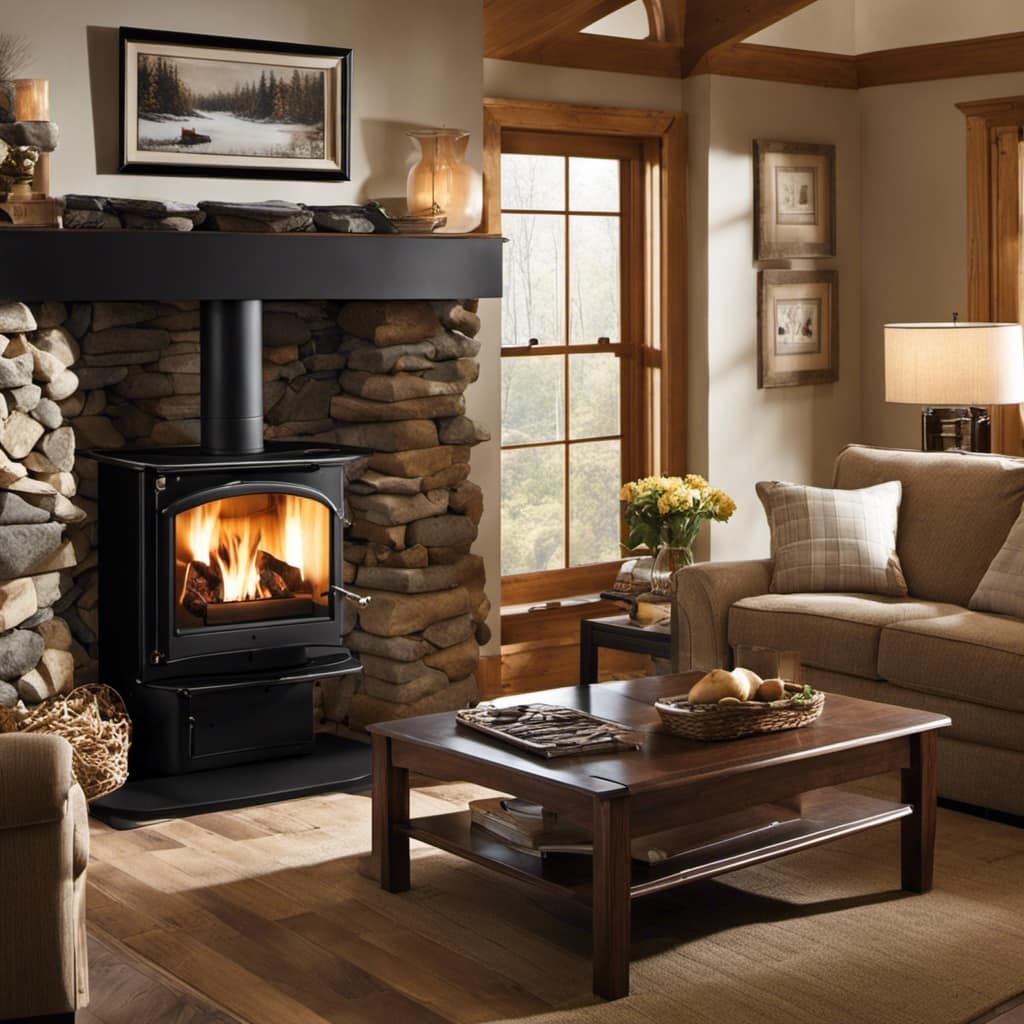
- Glass cleaner specifically designed for wood stove glass: This will ensure that the cleaner is strong enough to remove soot and grime, but gentle enough not to damage the glass surface.
- Soft microfiber cloth: This will help prevent scratching the glass while cleaning.
- Razor blade scraper: Sometimes, stubborn soot buildup requires a little extra help. A razor blade scraper can safely remove tough residue without scratching the glass.
Cleaning techniques for wood stove glass can vary, but the key is to always follow the manufacturer’s instructions and guidelines. If you’re unsure about cleaning the glass yourself, it’s always best to seek professional cleaning services. They have the expertise and tools to safely and effectively clean your wood stove glass, leaving it clear and pristine.
Step-By-Step Guide to Removing Soot From Wood Stove Glass
To effectively remove soot from my wood stove glass, I just need a few simple steps.
Cleaning techniques for wood stove glass can be easily done at home without the need for professional cleaning services.
First, I start by letting the stove cool down completely.
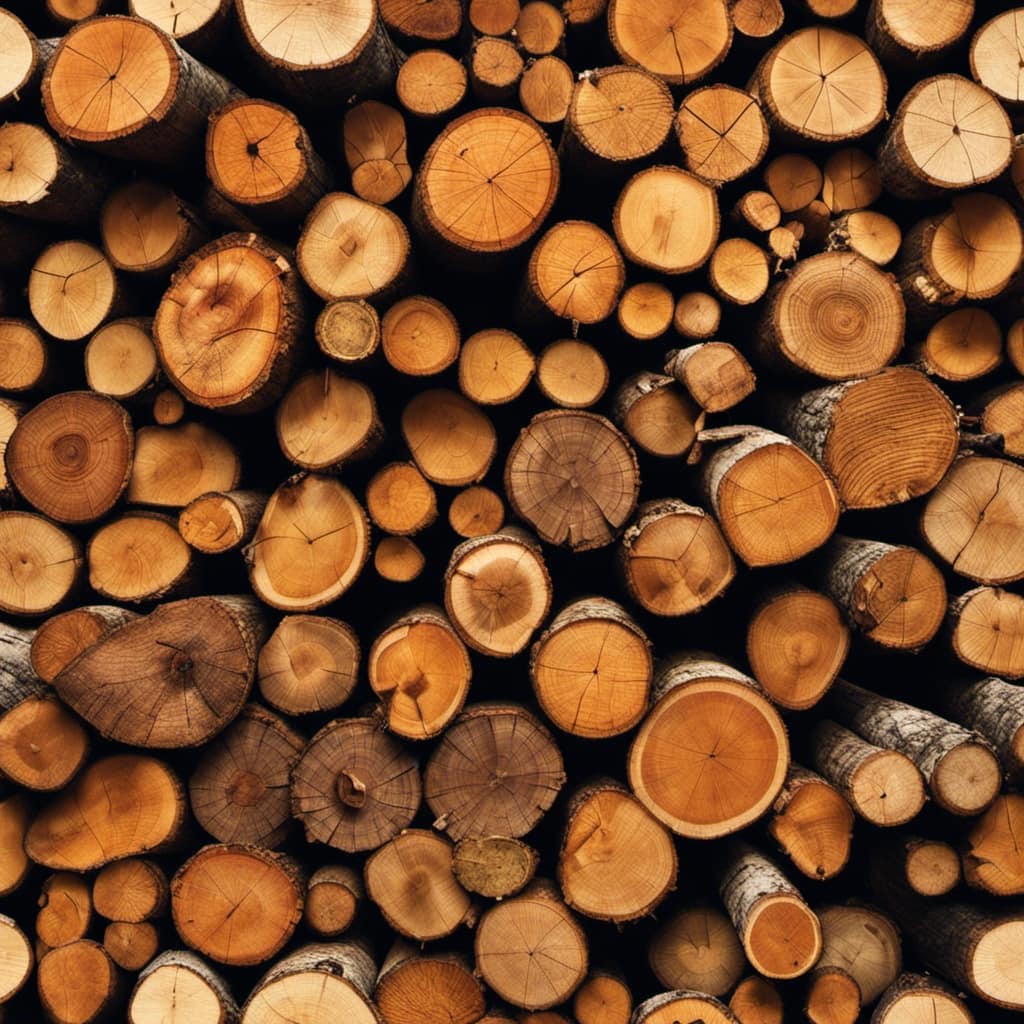
Then, I mix a solution of warm water and dish soap in a spray bottle.
Next, I spray the solution onto the glass and let it sit for a few minutes to loosen the soot.
Using a soft cloth or sponge, I gently scrub the glass in circular motions.
Once the soot is removed, I rinse the glass with clean water and dry it thoroughly.
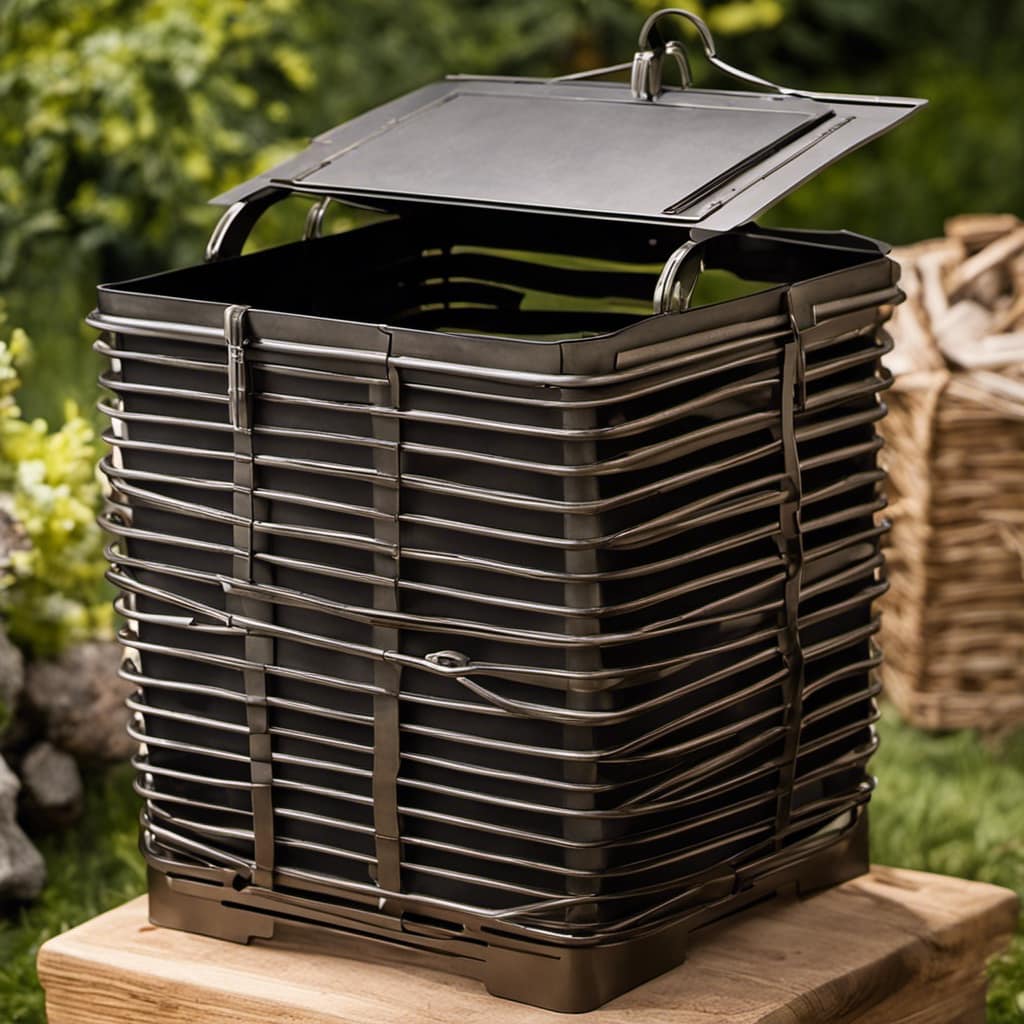
With these simple steps, I can keep my wood stove glass looking clean and clear without the expense of professional cleaning services.
Natural and Homemade Cleaning Solutions for Stubborn Soot
Using natural and homemade cleaning solutions can be an effective way to tackle stubborn soot on the wood stove glass. Not only are these homemade cleaners eco-friendly, but they’re also often more affordable than store-bought alternatives. Here are three homemade solutions that can help you get rid of soot without harsh chemicals:
-
Vinegar and water mixture: Mix equal parts white vinegar and water in a spray bottle. Spray the solution onto the sooty glass and let it sit for a few minutes. Then, scrub the glass with a non-abrasive sponge or cloth.
-
Baking soda paste: Make a paste by mixing baking soda and water. Apply the paste to the sooty glass and scrub gently using a sponge or cloth. Rinse thoroughly with water.
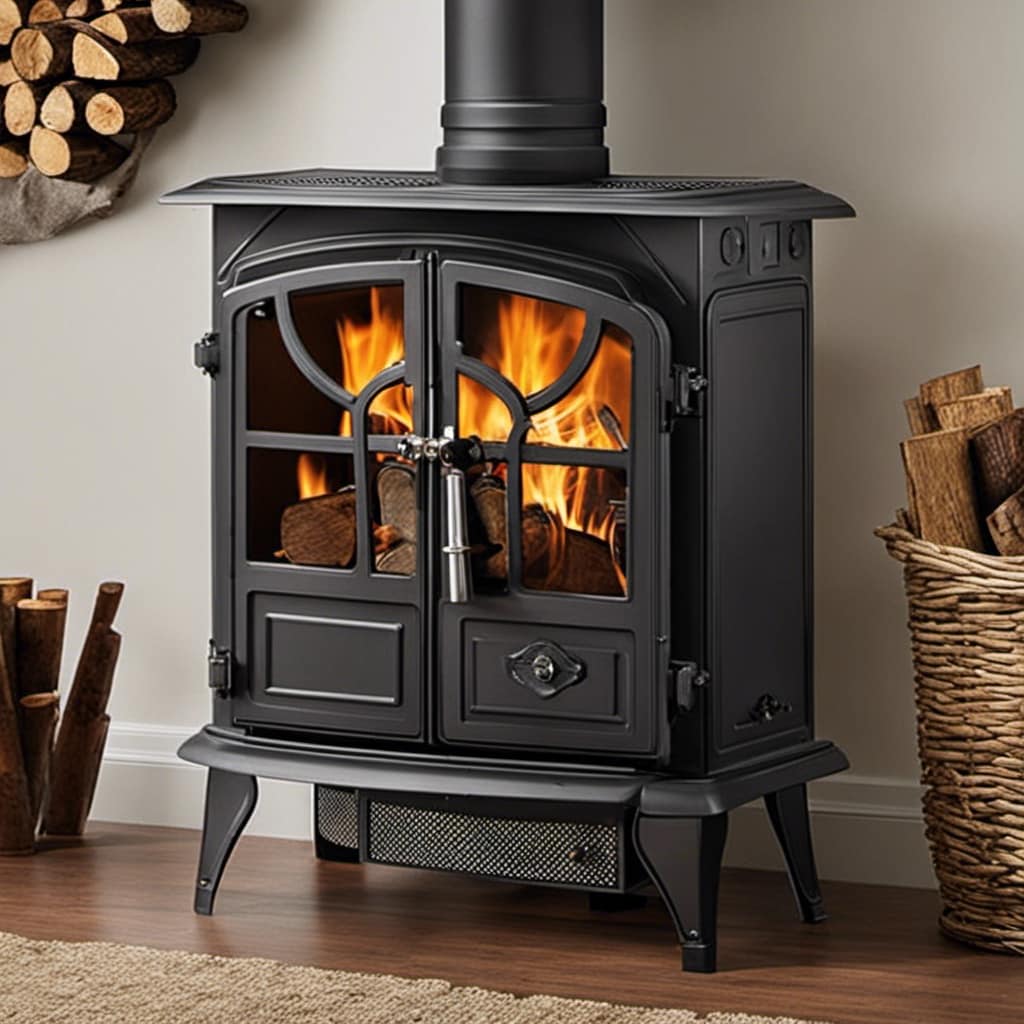
-
Lemon juice and salt scrub: Squeeze fresh lemon juice onto the glass and sprinkle salt on top. Use the lemon rind or a sponge to scrub the glass. Rinse with water.
Preventing Future Soot Build-up on Wood Stove Glass
To avoid future build-up of soot on my wood stove glass, I’ll make sure to regularly clean and maintain the stove, as well as use dry, seasoned firewood. Soot stains on the glass can be unsightly and difficult to remove, so taking preventive measures is essential.
Here are some tips to maintain the cleanliness of your wood stove glass:
-
Clean the stove regularly: Remove any ash or debris from the stove and clean the glass using a recommended glass cleaner or a mixture of vinegar and water.
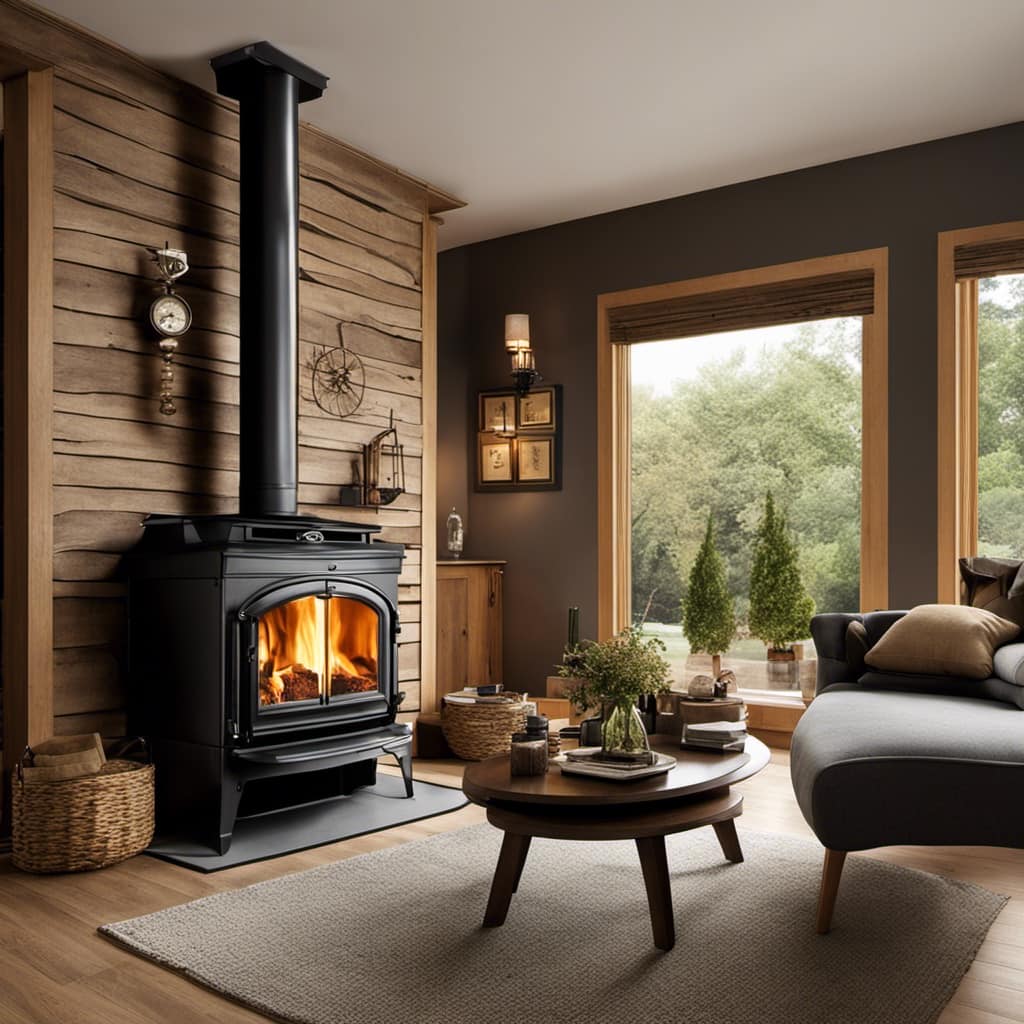
-
Use dry, seasoned firewood: Wet or unseasoned firewood produces more smoke and soot, increasing the chances of staining the glass. Make sure to store your firewood properly and allow it to dry for at least six months before using.
-
Adjust the air supply: Properly adjusting the air supply in the stove helps achieve a cleaner burn and reduces the amount of soot produced.
Frequently Asked Questions
How Long Does It Typically Take to Remove Soot From Wood Stove Glass?
Typically, removing soot from wood stove glass can take some time, depending on the severity of the build-up. However, with proper techniques and cleaning solutions, it can be done efficiently without damaging the glass. Additionally, implementing preventative measures can help minimize future soot accumulation.
Can I Use Regular Window Cleaner to Clean the Glass?
Sure, regular window cleaner might work, but I prefer using a vinegar and water solution. It’s safe and effective. Just be careful with ammonia-based cleaners, they can damage the glass.

Is It Necessary to Wear Protective Gloves While Cleaning the Glass?
Wearing protective gloves while cleaning the glass is necessary to prevent skin irritation and chemical exposure. However, there are alternative cleaning methods that can be used, such as vinegar and water solution or specialized stove glass cleaners.
Are There Any Specific Cleaning Products That Should Be Avoided When Cleaning Wood Stove Glass?
When cleaning wood stove glass, it’s important to avoid certain cleaning products that can damage the surface. Instead, try alternative methods like using a vinegar and water solution or specialty glass cleaners for a safe and effective clean.
How Often Should I Clean the Glass to Prevent Future Soot Build-Up?
To keep my wood stove glass free of soot, I clean it regularly and avoid using chemicals. By following best practices for maintaining cleanliness, I can enjoy a clear view of the fire.
Conclusion
In conclusion, removing soot from wood stove glass is a simple and essential task for maintaining the efficiency and appearance of your stove. By following the step-by-step guide and using natural cleaning solutions, you can easily eliminate stubborn soot build-up.
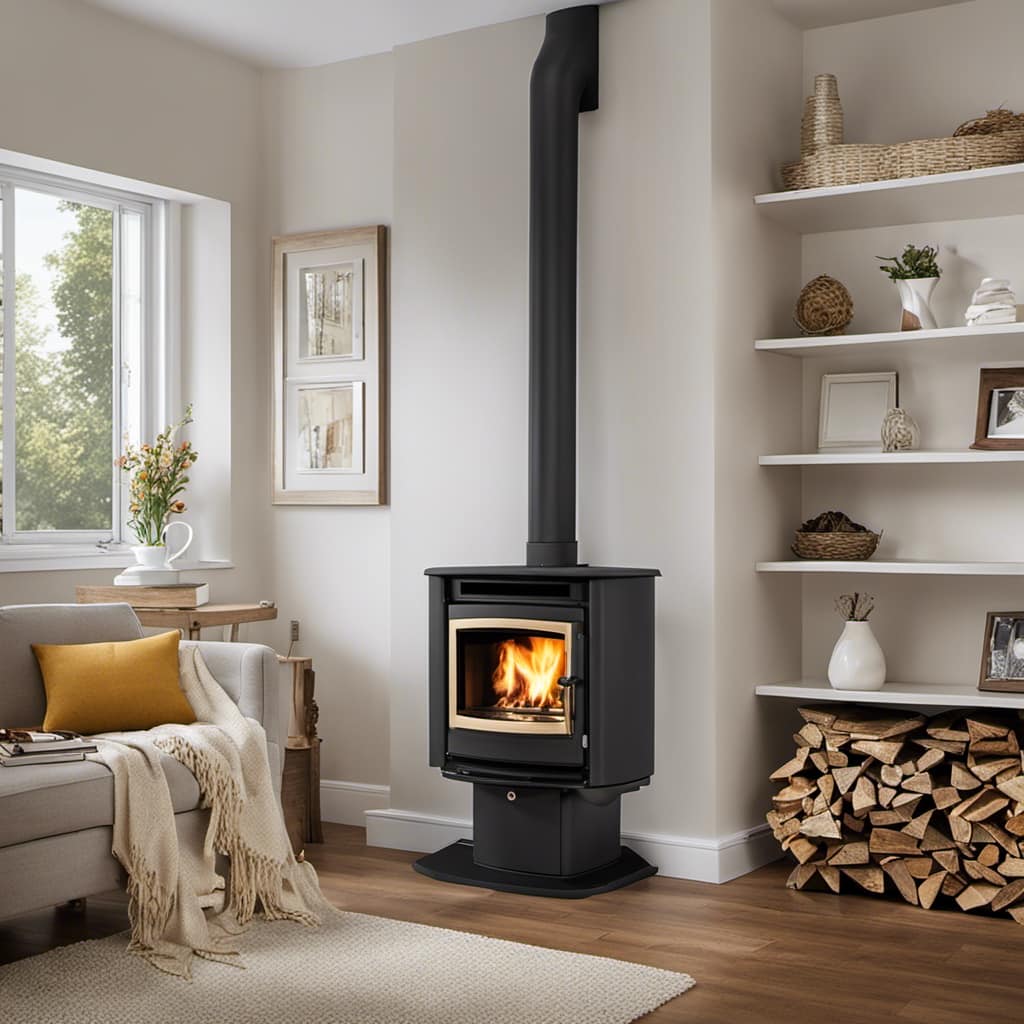
Did you know that regular cleaning can increase the lifespan of your wood stove glass by up to 50%? Taking the time to clean your glass regularly won’t only enhance the performance of your stove but also save you money in the long run.
Growing up surrounded by the vast beauty of nature, Sierra was always drawn to the call of the wild. While others sought the comfort of the familiar, she ventured out, embracing the unpredictable and finding stories in the heartbeat of nature.
At the epicenter of every remarkable venture lies a dynamic team—a fusion of diverse talents, visions, and passions. The essence of Best Small Wood Stoves is crafted and refined by such a trio: Sierra, Logan, and Terra. Their collective expertise has transformed the platform into a leading authority on small wood stoves, radiating warmth and knowledge in equal measure.


